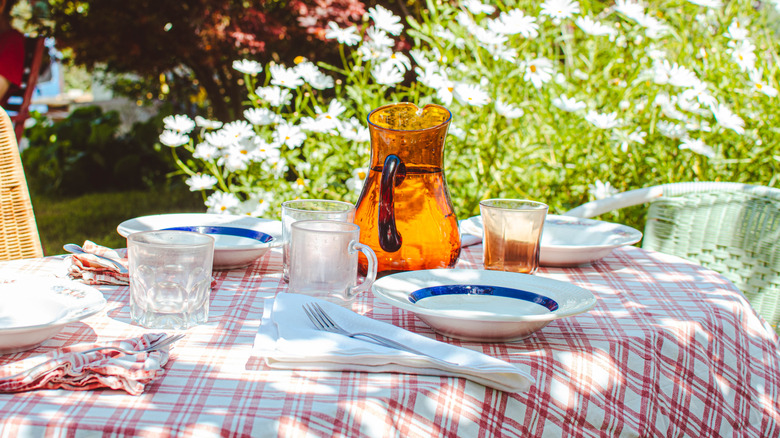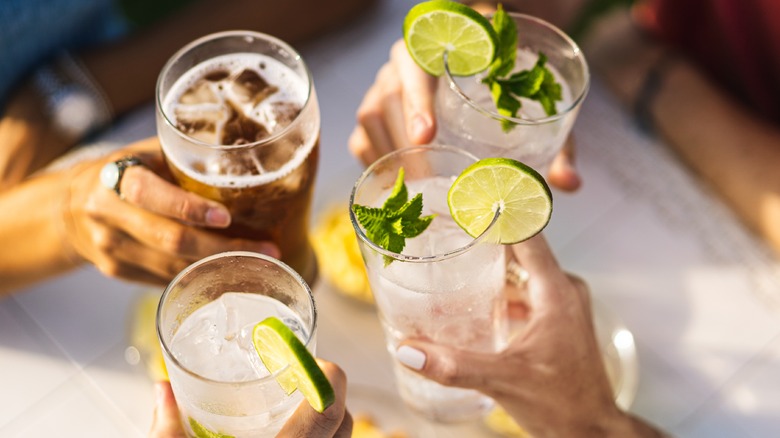The Easiest Way To Tell If Your Outdoor Glassware Is Really Shatter-Proof
When preparing to host summer parties, you need to be mindful of the glassware you will use for the outdoor setup. If it's real glass, you'll likely have to deal with sharp shards scattered across concrete or gravel when a guest accidentally bumps into or drops a glass. In this case, cleanup becomes stressful and hazardous since the pieces can fall right into the cracks. However, if you're to choose shatter-proof drinkware, the worst you'll have to deal with is picking up an intact cup and wiping the spilled liquid.
Shatter-proof glassware is primarily designed for outdoor use. While the term "glassware" may suggest actual glass, shatter-proof cups are typically made of materials that closely resemble real glass. The most commonly used materials in the production of these impact-resistant drinkware are Tritan plastic, acrylic, and polycarbonate. Since these materials are durable and clear, they can be designed to look like authentic drinking glasses.
Most of the time, it's hard to tell faux glassware apart from real glassware by just looking at it. But much like there's a way to tell if the fancy wine glasses you are eyeing at the store are high-quality, there are tricks to determine if the glassware in your hand is shatter-resistant or not. The easiest of them is to check the label and look for descriptive words like "shatter-proof," "shatter-resistant," or "break-resistant." Having any of them indicates that the item is made to withstand drops or rough handling without breaking, unlike real glass.
How to tell if it's shatterproof without a label
Suppose the label is missing or has worn off; there are still ways to identify if the beverage holder you have is made of break-resistant plastic or actual glass. First, check the weight. Glass tends to be heavier and more solid in hand compared to plastic materials. You'll know if the cup you are holding is faux glass if it's noticeably lighter. Next, inspect the edges or seams. Molded plastic often has faint lines or less refined rims, while real glass has a smooth finish.
Another way to distinguish the type of glassware you have is by testing its sound. Tap the side of the cup and listen for a distinct, clear, bell-like ring to know that it is authentic glass. If it produces a duller, softer sound without ringing, then it's made of plastic. Finally, observe how it reacts to temperature. Real glass feels colder to the touch than plastic when subjected to cold environments. You can place your cup in the fridge to test this out.
If you're planning to invest in shatter-proof glassware to include in your entertaining essentials for outdoor gatherings, consider choosing those made of Tritan plastic. Several sources say it is the safest option among plastic materials as it does not contain harmful chemicals like BPA or BPS. Cups made of Tristan plastic are also just about the same weight, feel, and look as real glass, but they are not easy to break.

